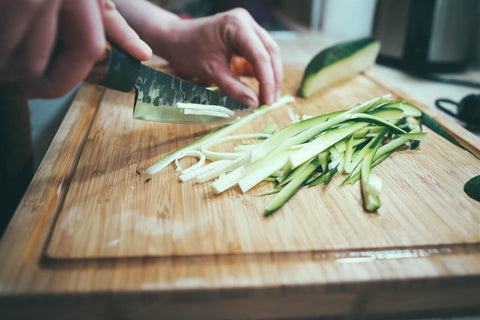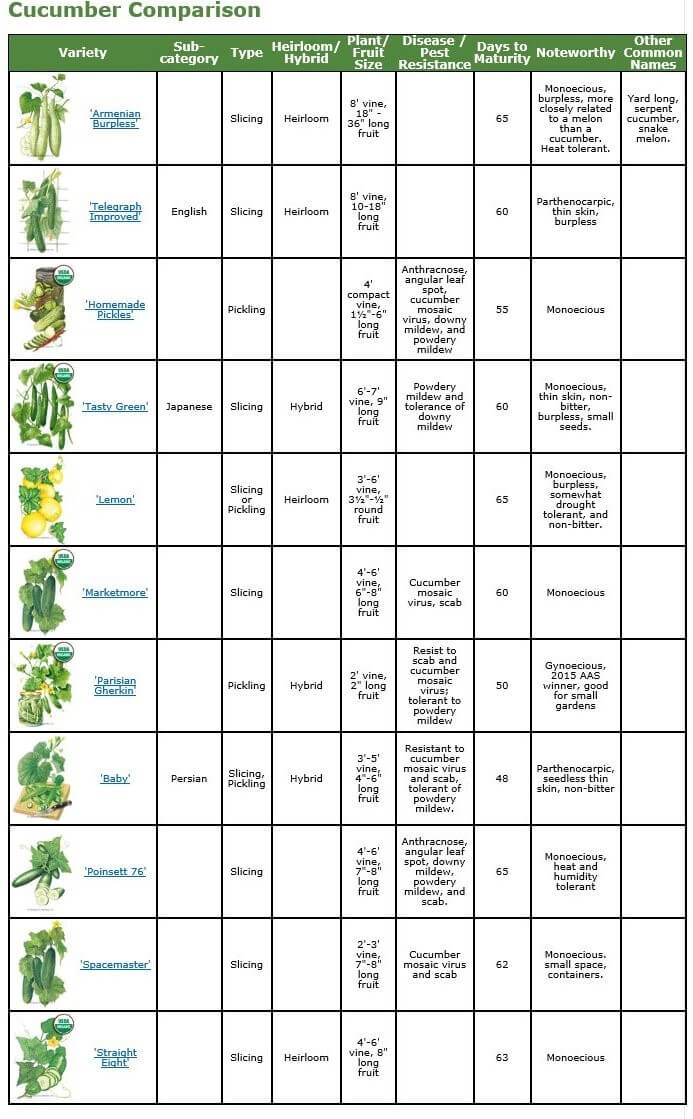How to Plant and Grow Your Own Cucumbers
Harvest Delicious Cucumbers for Your Next Salad

Want to add some extra freshness and crunchiness to your salads? Then consider growing your own cucumbers. Homegrown cucumbers have a thin, tender skin that doesn’t need to be peeled. Because cucumber plants are fast-growing and easy to maintain, you won’t have to wait long before you can add them to a salad or entree. Get ready to grow your own cucumber plants with our comprehensive guide below!
General Information

Categories
Cucumbers can be classified into two categories:
- Pickling types -- these cucumbers are usually stouter and have drier skins that are ideal for absorbing pickle brine.
- Slicing cucumbers -- cucumbers that have thinner, less bitter skins and longer fruit.
Pickling cucumbers can be eaten like slicers, and slicers can be pickled when young.
Species and Varieties
Monoecious cucumbers have both male and female flowers on any given plant, while gynoecious cucumbers only have female flowers. Therefore, a pollinator plant with male flowers is required for fruit production. Because gynoecious plants put energy into only female, fruit-bearing flowers, these varieties are usually very productive and fast to mature. In the absence of male pollen, some varieties (parthenocarpic) produce seedless fruit. Parthenocarpic varieties are often gynoecious or have a high percent of female flowers.
Cucumbers produce a chemical called cucurbitacin, which produces a slight bitter flavor mainly concentrated in the skin that causes minor indigestion in some people. Varieties with less of this chemical are referred to as “burpless”.
Check out this comparison chart from Botanical Interest:

When to Start Sowing Outside
You can direct-sow outdoors 1-2 weeks after the average last frost, and when soil temperature is at least 60°F, ideally 70°-90°F. If starting indoors, then you should sow 2-4 weeks before the average last frost. Cucumbers are sensitive to root disturbance, so you need to sow them in biodegradable pots that can be directly planted in the ground without disturbing their roots.
Prime Conditions for Planting

Soil
Soil should be light, well-drained, fertile, and rich in organic matter.
Exposure
Full sun, at least 6 hours.
Fertilizer
Apply a slow-release, balanced fertilizer comprised of equal parts nitrogen, phosphorus, and potassium to the soil before sowing. Since the root system is extensive, you must fertilize the entire growing area evenly. Cucumber roots are susceptible to fertilizer burn when fertilizer is applied too densely around the base of the plant. If you are growing cucumbers in the Garden Tower® 2 Vertical Ecosystem, the plant food and worm castings will work perfectly!
Special Care
Cucumbers are heat sensitive. Several days of temperatures in the mid 90s or higher can prevent the fruit from setting. If high temperatures become a concern for you, try providing afternoon shade using other crops or a shade cloth.
Non-parthenocarpic varieties are dependent on pollination by bees. Sowing bee-attracting flowers in the area can attract bees and therefore increase yield. Otherwise, hand pollination of these varieties will be necessary. To hand pollinate, transfer pollen from one male flower to several female flowers using a paintbrush or a similar tool. Female flowers have a miniature fruit at the base of the flower, while male flowers do not.
Cucumbers, and other squash-type plants, are susceptible to powdery mildew. They need to have a lot of air circulation around the vines and leaves.
Harvesting and Storage
Do not let the cucumbers get too big, as the plants stop producing if there are overly mature cucumbers on the vine. Pick them regularly before the fruits are bigger than the optimal size for the particular cucumber variety. Cut the stem rather than pulling at the fruit to break it off. Once picked, immediately immerse the cucumbers in cold water to disperse “field heat,” which increases the quality and life of picked fruit.
Store dry fruit in a plastic bag in the refrigerator for up to a week. Pickle or eat the cucumbers immediately after harvesting as possible to enjoy fresh, high quality fruit.



